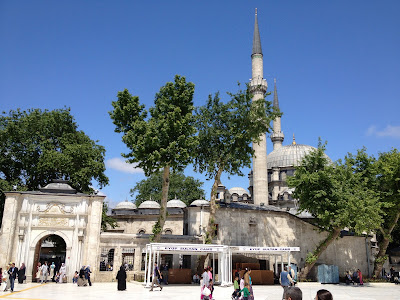History and Documentary of Al Aqsa Mosque
Hello Friends, Welcome to another blog. In this blog, History and Documentary of Al Aqsa Mosque.
Certainly, here is the history of Al-Aqsa Mosque:
1. Early Foundations: Al-Aqsa Mosque, located in the Old City of Jerusalem, has its roots in early Islamic history. It was initially built as a small prayer house on the Temple Mount, known as Haram esh-Sharif in Arabic, during the early Islamic period.
2. Umayyad Construction: The Umayyad Caliph Abd al-Malik ibn Marwan initiated the construction of the current Al-Aqsa Mosque in 688-691 CE. This project was part of a larger effort to establish Jerusalem as a prominent Islamic center.
3. Architectural Significance: Al-Aqsa is renowned for its architectural beauty and intricate designs, representing early Islamic architecture. Its layout includes a large prayer hall, courtyards, and domes.
4. Dome of the Rock: Al-Aqsa Mosque is often confused with the nearby Dome of the Rock, which is also located on the Temple Mount. The Dome of the Rock was built by the same Umayyad Caliphate but is a separate structure known for its iconic golden dome.
5. Jerusalem's Importance: Al-Aqsa Mosque holds significant religious and historical importance for Muslims worldwide. It is considered the third holiest site in Islam, after the Masjid al-Haram in Mecca and the Prophet's Mosque in Medina.
6. Name Significance: The name "Al-Aqsa" translates to "the farthest mosque" in Arabic, referencing its location as the farthest mosque mentioned in the Quran during the Prophet Muhammad's Night Journey (Isra and Mi'raj).
7. Islamic Rule: Over the centuries, control of Jerusalem, including Al-Aqsa Mosque, shifted between various Islamic dynasties, including the Umayyads, Abbasids, Fatimids, Ayyubids, Mamluks, Ottomans, and eventually the British.
8. Crusader Period: During the Crusader period (1099-1187 CE), Al-Aqsa Mosque was converted into a Christian church known as the Temple Solomon. After the recapture of Jerusalem by Saladin in 1187, it was restored as a mosque.
9. Mamluk Restoration: The Mamluk Sultanate (1250-1517 CE) made significant renovations to the Al-Aqsa Mosque, including the construction of additional prayer halls and minarets.
10. Ottoman Era: Under Ottoman rule (1517-1917 CE), Al-Aqsa Mosque underwent further renovations and expansions. The Ottomans maintained control of Jerusalem until the end of World War I.
11. British Mandate: Following the collapse of the Ottoman Empire, Jerusalem came under British control through the League of Nations mandate. During this period, tensions between Muslims and Jews in Palestine escalated.
12. Jordanian Control: After the 1948 Arab-Israeli War, Jordan controlled East Jerusalem, including the Old City and Al-Aqsa Mosque, until the Six-Day War in 1967.
13. Israeli Occupation: Since the Six-Day War, Israel has occupied East Jerusalem, including the Old City and the Temple Mount. However, Jordan retained custodianship over the Islamic holy sites in Jerusalem, including Al-Aqsa Mosque.
14. Contemporary Issues: Al-Aqsa Mosque remains a focal point of tensions between Israelis and Palestinians. The area surrounding the mosque has seen numerous clashes and disputes, particularly regarding access and control.
15. Religious Significance Today: Despite the ongoing political conflicts, the Al-Aqsa Mosque continues to be a place of worship and pilgrimage for Muslims worldwide, symbolizing their connection to Jerusalem and the broader Palestinian cause.
My other blogs link.
https://harisnajmi.blogspot.com/2024/04/history-about-machu-picchu-peru.html
https://harisnajmi.blogspot.com/2024/04/short-history-of-roman-empire.html
https://harisnajmi.blogspot.com/2024/04/history-of-blue-mosque-turkey.html
My famous blog link.
https://harisnajmi.blogspot.com/2024/03/history-of-mohenjo-daro.html
https://harisnajmi.blogspot.com/2024/03/history-of-taj-mahal.html
https://harisnajmi.blogspot.com/2024/03/pyramids-of-giza.html
.jpeg)
.jpeg)
.jpeg)

Comments
Post a Comment